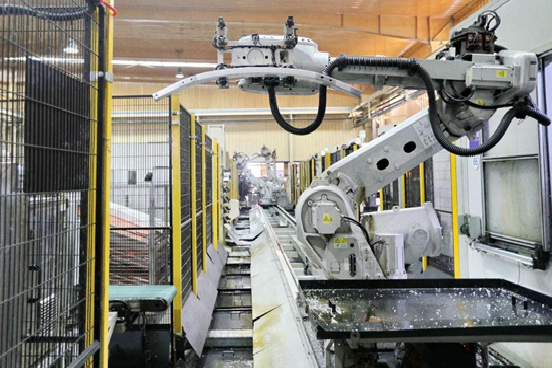By He Yin, People’s Daily
“In recent days, a growing number of global financial institutions have increased or planned to increase their holdings of Chinese assets, indicating confidence in the recovery of the world’s second largest economy with solid supportive measures in place,” said a recent article on the website of Brazil’s Forum magazine, fully affirming the slew of measures China has introduced to stabilize economic performance.
Many international observers have also pointed out that with macro-policy support, factors for the overall improvement of the Chinese economy have continued to accumulate, which is expected to further unleash the potential and continuously advance the high-quality development of the economy.
Amidst a complex and grim external environment, the Chinese economy has shown remarkable resilience with a growth rate significantly outpacing that of major developed economies.
In the first half of this year, China’s gross domestic product (GDP) expanded 5.5 percent year-on-year, markedly faster than the annual growth rate of 3 percent in 2022 and the average annual growth rate of 4.5 percent during the country’s three-year battle against the COVID-19 pandemic.
In its latest World Economic Outlook Update released last month, the International Monetary Fund (IMF) projected that China’s economy will grow 5.2 percent in 2023, ranking among the fastest-growing major economies.
A series of targeted measures rolled out by China recently, including earnestly optimizing the development environment for private enterprises, are believed to help consolidate the country’s economic growth momentum and further boost international confidence in the Chinese economy’s high-quality development.
Despite subdued cross-border investments globally, foreign institutions are increasing investment in China and actively exploring high-end industries and emerging sectors, demonstrating the strong and enduring appeal of the Chinese market.
In the past five years, the rate of return on foreign investment in China has reached 9.1 percent, far higher than the roughly 3 percent in the U.S. and Europe, according to China’s State Administration of Foreign Exchange.
In the first half of this year, foreign direct investment (FDI) from many developed countries into China registered growth, with investments from France, the UK, and Germany increasing by 173.3 percent, 135.3 percent, and 14.2 percent, respectively. Meanwhile, the number of newly established foreign enterprises in China rose 35.7 percent.
A mid-year report released this month by the American Chamber of Commerce in South China found that nearly 60 percent of U.S. companies remain optimistic about the Chinese market, and about 30 percent of the surveyed companies plan to expand their investments in China.
With tremendous market opportunities presented by the stable performance and growth momentum of the Chinese economy, constantly improving business climate, and mature and complete supply-chain system holding great appeal to foreign capital, China is expected to continue winning favor with foreign investors.
After a smooth transition in COVID-19 response, China has experienced a wave-like and zigzag process of economic recovery. At a crucial stage of stabilization and recovery as well as industrial upgrading, the Chinese economy is faced with obstacles in the process of development and issues in the course of progress. The country has taken active steps to address these problems, with relevant efforts already paying off.
Although China’s overall price level is temporarily low, considering indicators of economic growth, money supply, as well as other aspects of the economy, the country’s economy does not meet the criteria for deflation.
As the Chinese economy recovers steadily, the country will see gradual expansion of market demand, smooth economic circulation, improvement in supply-demand relationship, and slight and moderate fluctuations of overall price level within a reasonable range throughout the year.
Facing difficulties and challenges, China’s economy has sustained continuous recovery and overall growth, remaining an important engine for global economic growth.
Some Western politicians and media outlets view China’s post-pandemic recovery through tinted glasses, intentionally exaggerating problems facing the Chinese economy in this special stage and sensationalizing narratives like economic deflation, setbacks in recovery, and inadequate policies in China.
These clichéd arguments contradict facts and diverge from observations by many international institutions and individuals.
As some media pointed out, although Western media outlets relish dramatizing China’s economic slowdown, many international institutions remain optimistic about the Chinese market.
As China continues unswervingly advancing high-quality development, the Chinese economy’s overall upward trajectory will not be affected by external noises.
The Chinese economy has tremendous resilience and potential for development, and its fundamentals sustaining long-term growth remain unchanged.
China has the confidence, conditions and capabilities to continuously optimize its economic structure, enhance growth drivers, boost momentum of sound development, accelerate the formation of a new development pattern, comprehensively promote high-quality development, and contribute more positive energy to global economic recovery.












